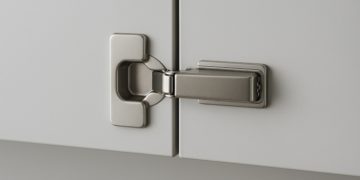Getting ready for a baby comes with a long list of things to plan—and figuring out how to get a breast pump through insurance can feel surprisingly complicated. I remember sitting on hold with my insurance company, squinting at policy fine print, thinking, “Why is this so hard?” You’d think something so essential would be straightforward.
If you’re in the same boat, take a breath—you’re not alone. I’ve gathered the must-know details about how insurance coverage works when it comes to breast pumps, and how you can confidently navigate it all. With a bit of guidance, getting the pump you need (without paying out of pocket) is totally possible.
Insurance Coverage Overview
These days, most health insurance plans do cover breast pumps, thanks to the Affordable Care Act, which classifies breastfeeding support and supplies as preventive care. Sounds promising, right? But the details can vary—sometimes a lot.
Some policies cover only rentals of hospital-grade pumps, while others include personal-use models like electric or manual options. I found it super helpful to speak directly with my insurer to get a clear rundown of what was actually covered under my plan.
You’ll likely need a prescription from your OB or midwife—just a heads-up. And in most cases, your coverage will include one pump per pregnancy. Some plans go a little further and even toss in extras like breast milk storage bags or replacement parts.
Also, make sure to stick with your insurer’s list of approved suppliers. These Durable Medical Equipment (DME) providers work directly with the insurance company, which usually means less hassle for you—and better reimbursement, too.
Types of Insurance Plans & Their Policies
Insurance isn’t one-size-fits-all, and depending on what kind of plan you have, the path to getting a breast pump through insurance might look a little different.
Private and Employer-Sponsored Insurance
If you’re covered under a private or employer-sponsored plan, good news—these usually offer decent support for breast pumps. But again, specifics vary. Most cover one pump per pregnancy, and many give you a choice between renting and purchasing. You might need that prescription, though, so don’t forget to ask your provider during a check-up.
Medicaid & State-Funded Programs
Medicaid and state-funded plans tend to be pretty thorough in their support, especially when it comes to expecting and new moms. Many cover both manual and electric pumps, along with parts and accessories. But every state sets its own rules, so it’s worth checking your local Medicaid website for the exact benefits.
Medicare
If you’re wondering whether Medicare covers breast pumps… well, it’s tricky. Typically, they only cover hospital-grade rentals—and only under specific medical circumstances. Personal-use pumps generally aren’t included, so you’ll need to dig into the fine print and likely work through a DME supplier if you’re hoping to get coverage.
Covered Pump Types & Upgrades
Now, let’s talk about the types of pumps your insurance might pay for—and how to figure out what’s right for you.
Electric Pumps
Double electric pumps are the go-to for most moms, especially if you plan to pump regularly. They’re often covered through insurance, but which brand or model you can get will depend on your policy. Some require a prescription. Others might let you choose from a short list. Always double-check.
Manual Pumps
They’re simple, portable, and often covered too. If you’re not planning to pump often, a manual pump could actually be all you need. Still, it’s a good idea to ask your insurer what’s available before making a decision.
Hospital-Grade Pumps
These are the heavy-duty ones. Usually, insurance will only cover them if there’s a medical need—say, if your baby is premature or has trouble latching. These are typically rentals rather than purchases, and they come through DME providers.
Upgrades and Accessories
Want a higher-end model or a hands-free setup? Some insurance plans allow for “upgrades” where you pay the difference between the basic covered pump and a premium version. You might also get coverage for items like storage bags or extra parts. Again, all of this depends on the details of your plan, so don’t be shy about asking.
One excellent option I discovered while researching? The S12 Pro Wearable Breast Pump. It’s efficient, wireless, and super discreet—great if you’re looking for something that fits into a busy schedule without the cords and clunky parts. Some plans will even let you upgrade to this kind of pump with partial coverage.
How to Obtain Your Insurance-Covered Pump
So, how do you actually go about getting your breast pump through insurance? Here’s the breakdown.
Prescription & Documentation
Most insurers want a prescription before they’ll greenlight your pump. Your OB, midwife, or family doctor can help with that—just ask during a regular appointment. Some plans might also require supporting paperwork or a specific form, so it helps to be prepared.
Using a DME Supplier
Durable Medical Equipment suppliers are the middlemen between you and your insurance. They make the process a whole lot easier by handling the paperwork and billing. Just make sure the supplier you choose works with your insurance provider. Many of them even have websites where you can browse covered pumps and submit your info online.
Timing & Eligibility
Coverage usually kicks in once your pregnancy is confirmed, but that doesn’t mean every plan works the same way. Some only start offering coverage in the third trimester, others the moment you’re pregnant. You’ll want to verify this early on so you don’t get caught in a “not yet eligible” situation.
Also, most plans limit you to one pump per pregnancy. But some may offer coverage for parts or replacement pieces down the line—especially if your pump sees a lot of use.
Coverage for Supplies & Support Services
Beyond the pump itself, many policies also cover extras that help support your breastfeeding journey.
Double electric pumps are the most common type covered, but you might also be able to request accessories like tubing, breast shields, storage bottles, and milk bags. Just make sure to ask—these add-ons can really add up otherwise.
A DME supplier can clarify what’s included with your insurance. They’ll also help file the claim, which can save you time and mental energy—something every new parent needs more of.
What If Coverage Fails or Lacks?
Unfortunately, not all policies are perfect. If your plan doesn’t fully cover a pump—or covers one that doesn’t meet your needs—you’ve still got options.
First, comb through your policy documents. Sometimes coverage is there, just buried under complicated language. And if things still aren’t clear, hop on a call with your insurance provider and ask for a plain-language explanation.
If they won’t budge, you can:
- Pay out-of-pocket for a pump that works better for you.
- Rent a hospital-grade pump at a reduced cost.
- Reach out to local organizations, health departments, or nonprofits that provide low-cost or free pumps.
- Talk to a lactation consultant or support group for advice on resources.
- File an appeal with your insurer (it’s more common than you’d think).
Bottom line: if you hit a wall, don’t give up. There’s usually another way.
Planning Tips for Expecting Moms
Getting a breast pump through insurance doesn’t have to be a last-minute scramble. A little planning goes a long way.
- Read your policy – Get familiar with your plan’s coverage and documentation needs early.
- Talk to your provider – Ask for a prescription during a regular appointment.
- Check your timing – Some policies activate coverage earlier than others.
- Use a DME supplier – Let them handle the red tape.
- Explore accessory coverage – Don’t miss out on supplies you may be entitled to.
- Look into alternatives – Community programs or nonprofit resources can help if coverage falls short.
Empowered Takeaway
If there’s one thing I’ve learned, it’s this: navigating insurance coverage for a breast pump doesn’t have to be overwhelming. Once you understand your plan, ask the right questions, and loop in your provider, the pieces start falling into place.
And remember—this isn’t just about checking a box. It’s about giving yourself the tools to feed your baby in a way that works for you. Whether you go with a simple manual pump or something like the Momcozy S12 Pro Wearable Breast Pump that lets you move around and multitask, the goal is to feel supported and confident.
You’ve got this. Just take it one step at a time, and don’t be afraid to advocate for what you need.












































































